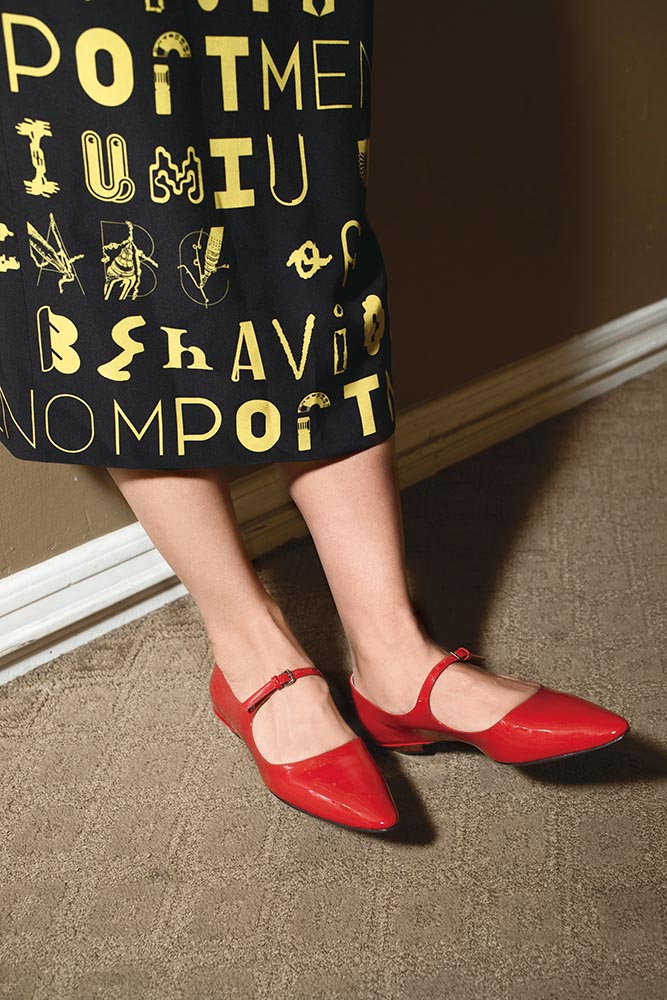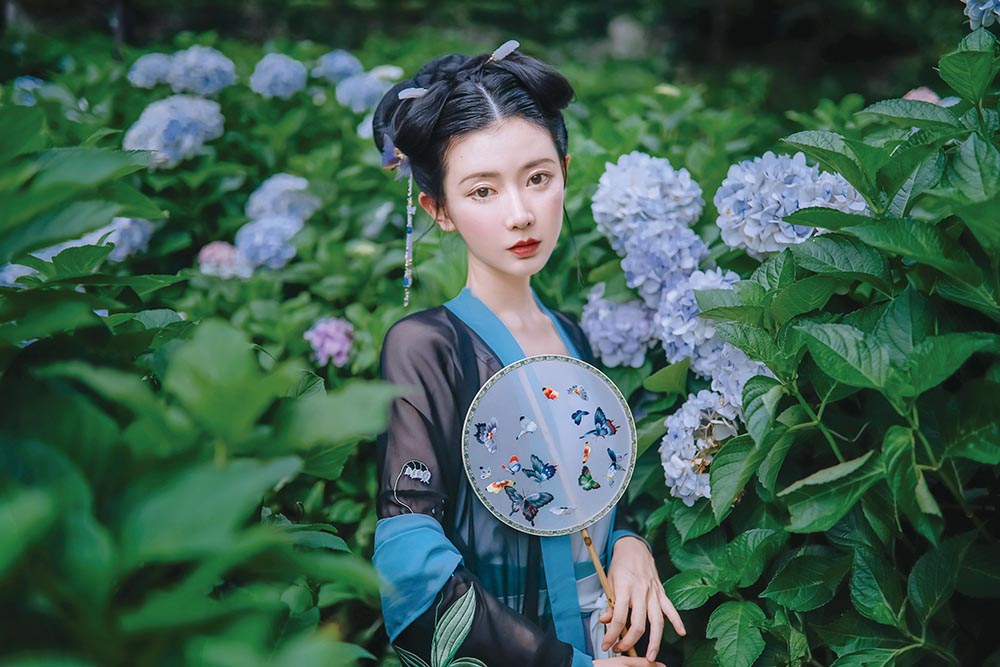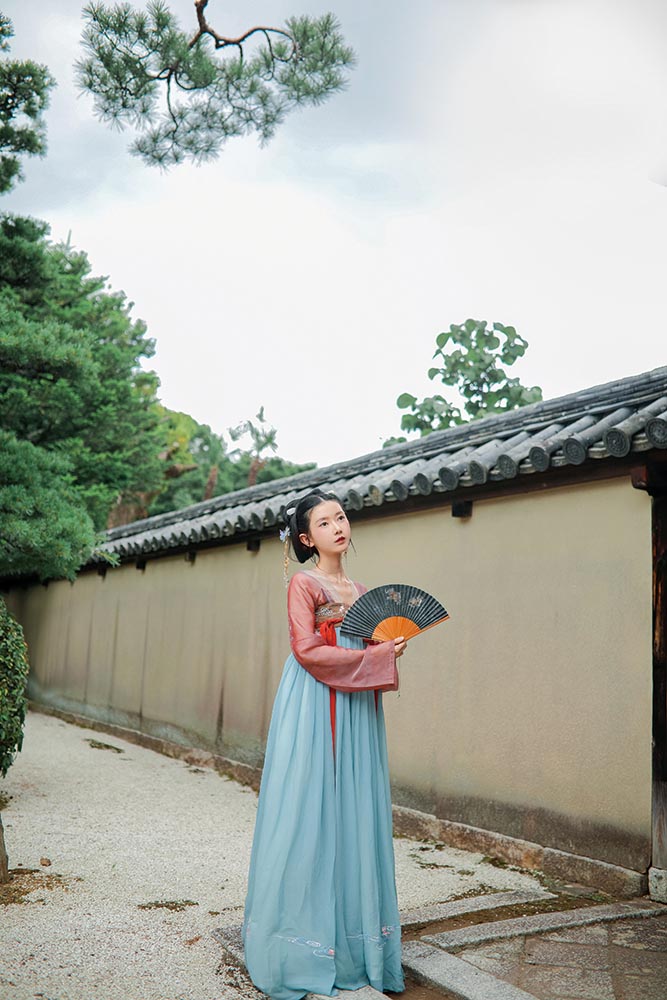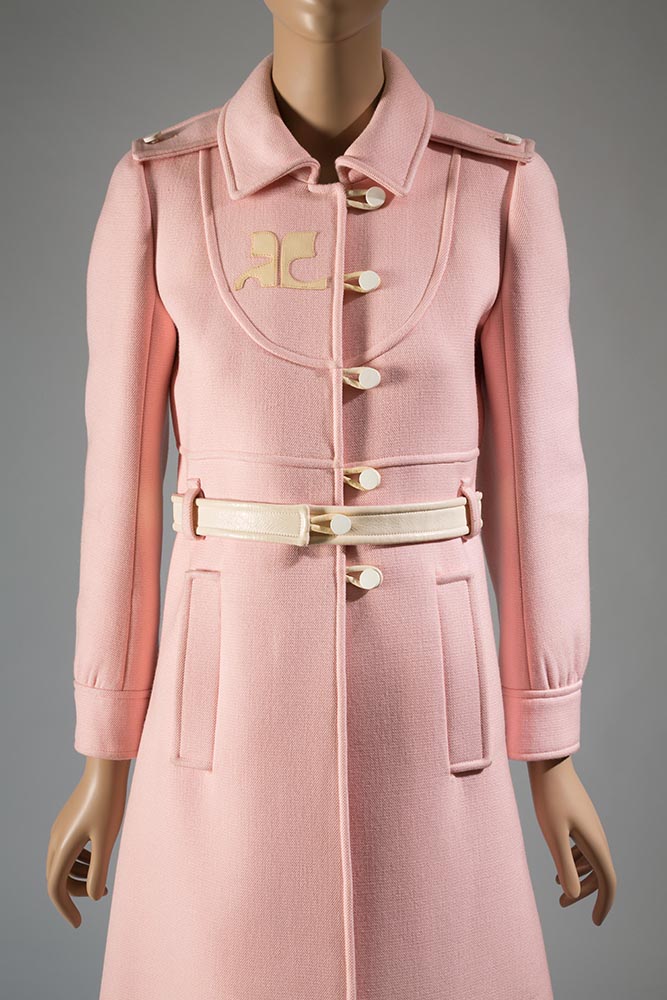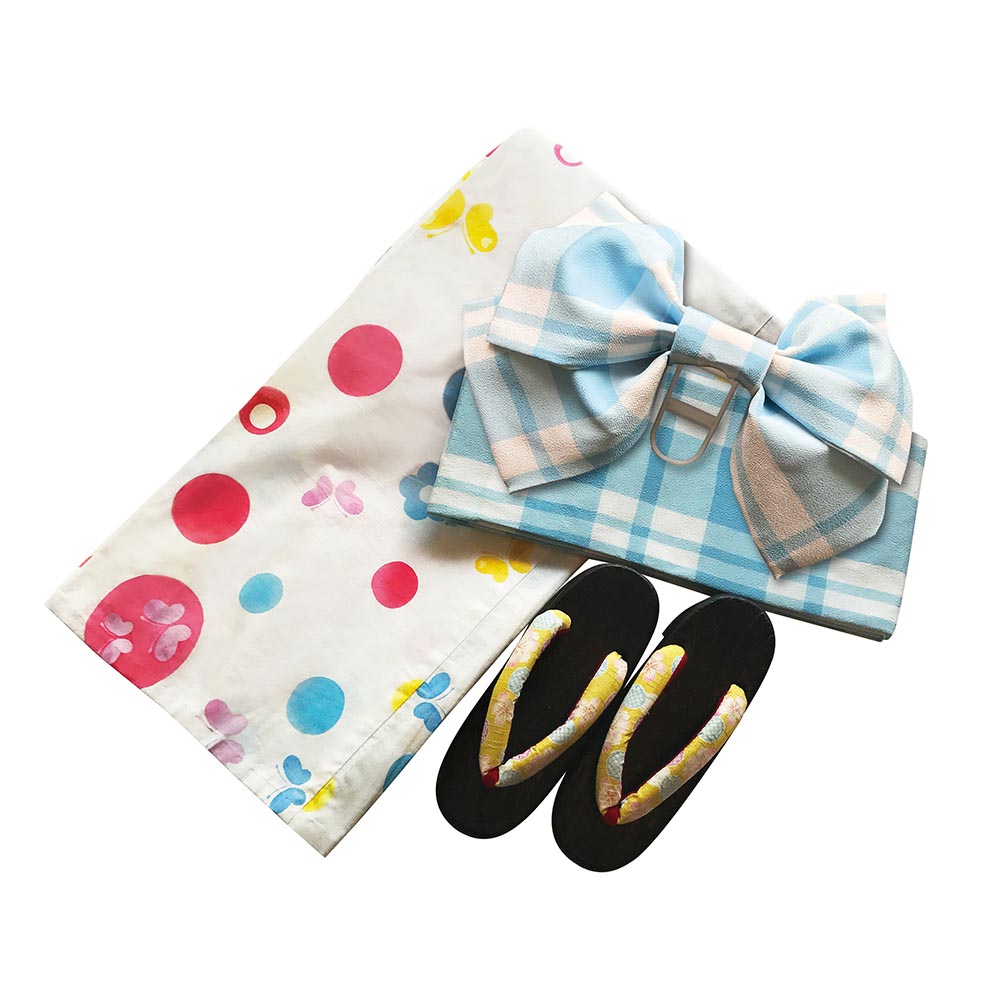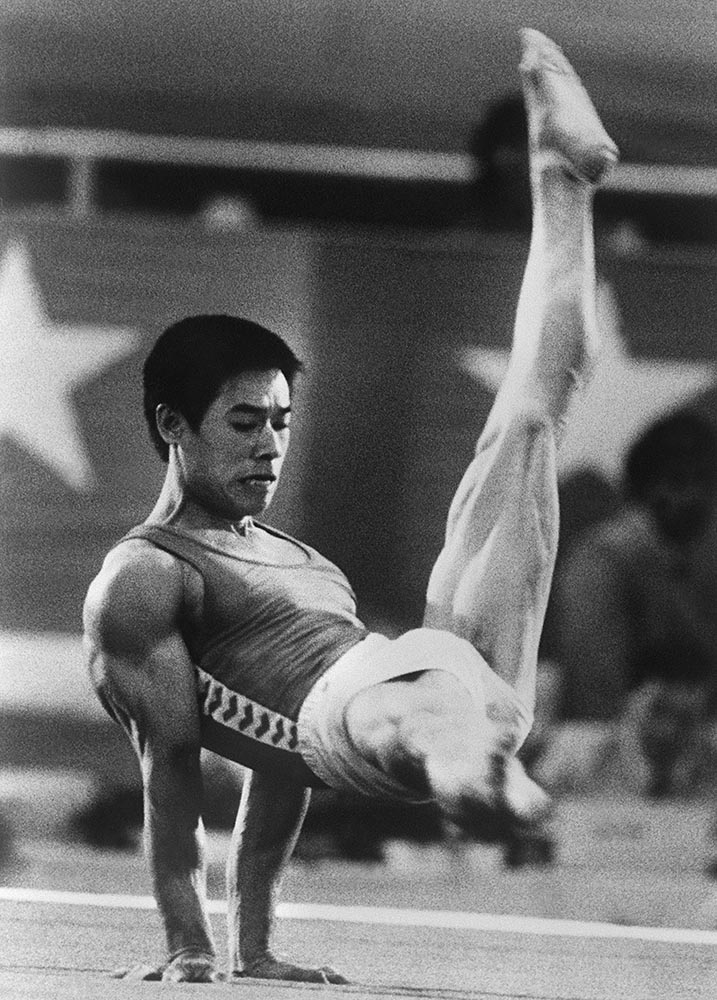









Fashion
Fashion

Brand Aid
Luxury brands are looking to address sustainability and climate change for a healthy future
Brand Aid
Luxury brands are looking to address sustainability and climate change for a healthy future
Lifestyle > Fashion |
Brand Aid
November 7, 2018 / by China Daily Lifestyle Premium
Having a conscience is totally in this season. A recent report titled Disrupting Luxury: Creating Resilient Businesses in Times of Rapid Change makes specific recommendations to address climate change and biodiversity loss, with the participation of giants from the luxury sector including Kering (owner of Gucci, Bottega Veneta, Balenciaga and numerous other brands), Cartier, Ralph Lauren, The Hong Kong and Shanghai Hotels (owner of The Peninsula), and more.
“Many luxury companies came together to contribute to this report, signalling that while competition may be alive and well in the commercial space, luxury brands recommend that collaboration towards social and environmental progress is essential to the future of the industry,” writes Elisa Niemtzow, the managing director of BSR, a non-profit organisation that spearheads the Responsible Luxury Initiative that led the report.
Disrupting Luxury advocates engaging in the circular economy to reduce waste and increase recycling, contributing a positive impact on society through business strategy and philanthropy, and increasing the transparency for consumers and investors about the progress made on such initiatives.
Kering and H&M have also been working to address the clothes-to-landfill issue with the company Worn Again, whose recycling technology can separate and extract polyester and cotton from old or end-of-use clothing and textiles. Meanwhile, in the start-up sector, Fashion for Good is a global initiative that funds promising newcomers that conform to its “Five Goods” framework of “good materials, good economy, good energy, good water and good lives”. For the fashion and luxury sectors, sustainability appears to be the new extravagance. ![]()

Selves Set Free
Saudi film director Haifaa Al-Mansour’s The Wedding Singer’s Daughter delivers a game-changing message for Miu Miu’s Women’s Tales series
Selves Set Free
Saudi film director Haifaa Al-Mansour’s The Wedding Singer’s Daughter delivers a game-changing message for Miu Miu’s Women’s Tales series
Lifestyle > Fashion |
Selves Set Free
October 10, 2018 / by Sonia Altshuler
“I want to continue making films. It’s hard to deal with societies that are very conservative, but patience pays off – especially with cinema, which in Saudi Arabia was illegal until recently”
It’s night-time in 1980s Riyadh, Saudi Arabia. Glittery and glamorous heels climb out of cars. Women shrouded in traditional black abayas make their way into a wedding hall, where they reveal what’s underneath: dazzling dresses and wild hair. Their true selves are set free, unseen by the male gaze. There are strict segregation rules in Saudi weddings. All eyes and ears are on the wedding singer, until the electricity suddenly cuts out. “This is the worst wedding singer ever,” guests mutter condescendingly. Will the young daughter manage to save her mother’s dignity?
The Wedding Singer’s Daughter, directed by Haifaa Al-Mansour, is the 16th commission from the Miu Miu Women’s Tales short-film series, which each year premieres at the Venice Film Festival in September. The works invite contemporary female directors to investigate vanity and femininity in the 21st century; previous directors have included Dakota Fanning, Celia Rowlson-Hall and Chloë Sevigny.
Al-Mansour felt a wedding was the best encapsulation of Saudi Arabia today. “I always felt a wedding is like the actual mirror of society in Saudi Arabia,” she explains. “We are always segregated and our societies are fragmented. People don’t really get together so much in Saudi Arabia, apart from weddings, schools, et cetera. In a society where music is illegal and forbidden, I wanted to capture that tenderness, and that kind of tension between the bigger society and people who entertain – those who are meant to bring joy and be celebrated… but that doesn’t happen so much in Saudi Arabia.”
Known as the country’s only female film director, the success of Al-Mansour’s 2005 documentary Women Without Shadows influenced a new generation of filmmakers. Her inaugural feature, Wadjda, which premiered at the Venice Film Festival in 2012, is the first feature film shot entirely in Saudi Arabia and the first by a female director. She also directed this year’s Mary Shelley, with Elle Fanning playing the lead role of the author. Al-Mansour is also the first artist from the Arabian Gulf region to be invited to join the Academy of Motion Picture Arts and Sciences.
Al-Mansour’s game-changing career has mirrored the fortunes of Saudi Arabia, where Crown Prince Mohammed bin Salman has been overseeing new freedoms – women can now drive (as of June this year), visit the cinema and work in shops. But Saudi women must still dress in abayas – full-length robes – and many but not all wear the niqab (face-covering veil).
Read More
“I want to continue making films,” says Al-Mansour. “It’s hard to deal with societies that are very conservative, but patience pays off – especially with cinema, which in Saudi Arabia was illegal until recently.” The Saudi government has given the go-ahead for her new film, The Perfect Candidate, to be shot in the country, with the backing of the new national Saudi Film Council. It’s a huge victory for the director. “I have backing and funding from the government now that cinema is legal again, so I will not be hiding in a van and I will be able to shoot in the streets – more relaxed, more engaged with the art.”
To substantiate the point about the growing narrative of feminine power, Al-Mansour cast Los Angeles-based Saudi pop singer Rotana Tarabzouni, a role model to women world over, as the wedding singer in The Wedding Singer’s Daughter. “I feel like I truly represent the growing pains of Saudi Arabia,” says Tarabzouni. “And I have lived on both sides of it. I think of myself and women of my generation as the necessary and exciting growing pains of any society going through a reform and artistic renaissance.”
“I’m really proud of Miu Miu doing all those Women’s Tales,” says Al-Mansour. “It’s often hard for women to tell their stories, especially in filmmaking – an industry so much controlled by men as financiers, producers or directors. Now, women are moving forward and having a safe working environment. My goal is not to condemn someone, but to try to make beautiful films. Women also need to support each other at the front and back of the camera to create solidarity and power. We can’t move alone. We have to focus together.” ![]()

Pleasure and Pain
Powerful indicators of gender, class, status, wealth and sexual preferences, shoes define the path the human race continues to tread
Pleasure and Pain
Powerful indicators of gender, class, status, wealth and sexual preferences, shoes define the path the human race continues to tread
Lifestyle > Fashion |
Pleasure and Pain
October 10, 2018 / by China Daily Lifestyle Premium
Image above: Rainbow sandal by Salvatore Ferragamo
The Cinderella shoe designed by Swarovski
Shoes have caused pleasure and pain – often simultaneously – throughout history, and their designs have influenced human and societal behaviour. And perhaps above all other human appurtenances of dress, shoes hold the most distinct place as objects that, at their most basic, are intended to aid one of our most practical functions – transport – yet which have come to hold such symbolic and aesthetic importance. In some cases, they’re so far removed from functionality that they cause pain to their wearers. The glamour and desirability of such provocative creations tells us much about the complex and enduring link between suffering, sex and style.
Charting the long development of shoes from ancient Egypt to the contemporary catwalk offers nothing less than a fascinating, alternative history of the world. It’s a chance to, quite literally, put yourself “in the shoes of the past”. The perception of shoes as signifiers of power and even objects of desire dates back many centuries. Indeed, their hold on our imagination is such that they have passed into myth and fiction, and their different meanings have become deeply embedded in our psyche from childhood.
Extraordinary shoes feature as magical objects in stories and folklore from all over the world (from Hans Christian Andersen’s The Red Shoes to Dorothy Gale’s ruby slippers in The Wizard of Oz) – and modern myths include the concept of fairy-tale shoemakers, whose creations will magically transform the life of the wearer. Who doesn’t, for example, recognise the transformative power of Cinderella’s glass slipper?
Read More
Height is perhaps the most noticeable signifier of status and identity, and examples of elevating footwear can be found all over the world, making their wearers stand above the crowd. The pedestal-like chopine of late-16th- to early-17th-century Europe, which was particularly popular in Italy and Spain, transformed upper-class women into towering figures, sometimes so exceptionally high that their maids had to be used as human crutches.
And even when otherwise naked, wearers have expressed their status through decorative (but very tall) footwear. In China during the Qing Dynasty, elite Manchu women wore high, centrally heeled shoes, producing a distinctive swaying walk, while men wore shoes with stacked platforms. The geta, the traditional, simple wooden clog worn in Japan, became richly decorated for the nobility and took its wearer to extreme heights during the Edo period (1603–1868). Indian silver toe-knob sandals, known as paduka, were probably a wedding present to the bride in 19th-century India and, although mainly ceremonial, would make the bride stand out when they were worn, so that she was easily spotted and admired in the gathering.
Even when shoes appear to be functional and comfortable – like the soft, flat pumps favoured in the Western world for the first half of the 19th century (and the similar-looking ballet pumps today) – they can be as physically restrictive as high heels. The silk-satin uppers and very thin soles of such shoes were not made for walking, and in effect limited women to the domestic sphere.
This all changed with the arrival of the 20th century. Fashion Institute of New York curator Valerie Steele once suggested that some men exhibit an almost Pavlovian response to the sight of a woman in high heels. Shoes play an important part in what is culturally considered to be sexy and have long been objects of fetishism. The erotic aspects of footwear can be an empowering expression of sexuality or can identify the wearer as a passive source of pleasure.
The sexualisation and genderisation of high-heeled shoes, especially, exerts a constant fascination on the popular imagination and a particular way of walking – epitomised by the stylish wiggle of Marilyn Monroe, who is intimately associated with this phenomenon. The allure of high heels, it has been argued, is down to the way they force out a woman’s breasts and buttocks, and make her hips move from side to side as she walks. The attenuated position of the feet in high heels has even been compared to the flexed feet of a woman during orgasm.
Boots designed by Salvatore Ferragamo for Karen Mok’s recent concert series
Parakeet shoes by Caroline Groves
Learn (and see) more at Pacific Place in Hong Kong as part of the touring Victoria & Albert Museum’s Pleasure and Pain exhibition. The collection of more than 140 pairs of shoes invites visitors to gaze at unique creations by the likes of contemporary legends including Manolo Blahnik, Christian Louboutin, Jimmy Choo and Salvatore Ferragamo. There’s also a capsule collection of shoes designed specifically for local celebrity icon Karen Mok on the occasion of her concerts, which have pushed the Hong Kong foot and shoe fetish envelope over the years, as well as those at her wedding, film appearances and luxury events. The Ferragamo HQ in Rome even has one with her name on it. Take the measure of mankind’s standing until October 28. ![]()
A pair of paduka
The 90-degree high heel shoe called “Estelle”

All Dressed Up
Move over, cheongsam – the traditional hanfu is having its moment in China
All Dressed Up
Move over, cheongsam – the traditional hanfu is having its moment in China
Lifestyle > Fashion |
All Dressed Up
October 10, 2018 / by China Daily Lifestyle Premium
When thinking about traditional Asian dress, what’s the first item that comes to mind? Is it the Japanese kimono, the Korean hanbok or the Chinese cheongsam? Though many regard the last as an enduring symbol of Chinese culture, some, especially those in the younger generation, have shifted their preferences to hanfu, a traditional costume that originated before the Han dynasty and has been popularised through TV and movies.
A big supporter of hanfu, Chinese actress Xu Jiao impressed the world by wearing an exquisite piece to the Venice Film Festival last year. Featuring white gauze fabric, a black belt with beautiful fringe in the middle and an embroidered pattern of a golden bird, this V-neck hanfu dress is a great example that blends traditional and modern elements.
However, as of yet, the hanfu hasn’t grabbed as much attention as the kimono, the hanbok or the cheongsam. To address this, the popular blogger Miqiujun is determined to spread its culture around the world. With 16.8 million followers on her Weibo account, she now runs a brand called Jieziji with her husband. “As my parents and grandmother are tailors, I have had an interest in clothing and design since I was a little girl,” she says. “I took part in some hanfu activities in university and then started my own company four years ago.”
With her husband serving as the photographer, Miqiujun has put a plethora of gorgeous hanfu pictures on her Weibo. “I usually do my own haircut and make-up,” she explains. “In the second half of 2016, I shot a video about women in different dynasties and their ways of dressing up. I looked up many books and sometimes used pottery figurines to get useful information.” This hit video introduced four dynasties – Han, Tang, Song and Ming – as well as the women back then, their lifestyles and their pursuits of beauty.
Miqiujun has also started an outreach activity called Travel with Hanfu – a world tour to educate and showcase the garment in 15 countries and counting. “Our first stop was Nepal and we just came back from Japan,” she says. “Many people mistake the hanfu for a kimono or a hanbok. We explain the history; they also think it’s beautiful and want to give it a try. The cheongsam enjoys more popularity and wider recognition. But it would be great if people could also think of hanfu.” ![]()

Panavision Pink
There’s more to the colour pink than My Little Pony and ballerinas. From the aristocratic man to feminine glam, contemporary designers continue to subvert its oscillating associations
Panavision Pink
There’s more to the colour pink than My Little Pony and ballerinas. From the aristocratic man to feminine glam, contemporary designers continue to subvert its oscillating associations
Lifestyle > Fashion |
Panavision Pink
September 26, 2018 / by Sonia Altshuler
“Pink: The History of a Punk, Pretty, Powerful Colour corrects popular misconceptions, and encourages viewers to question clichés and received opinion. Ultimately, it demonstrates that “it is society that ‘makes’ colour, defines it and gives it meaning”, to quote colour historian Michel Pastoureau”
Sweatshirt, featuring a photo of rapper Cam’ron wearing pink fur, circa 2003, anonymous donor
Pink is one of the most divisive colours, yet attitudes towards the hue are changing as it shifts to something increasingly regarded as cool and androgynous. Although popularly associated with little girls, ballerinas and all things feminine, the stereotype of “pink for girls and blue for boys” only really gained traction in the United States in the mid-20th century; the symbolism of pink has varied greatly across world history.
It’s no small irony that by the 18th century, pink was a new and highly fashionable unisex colour in Europe, in contrast to the 19th and 20th centuries, when pink became coded as a feminine colour. The New York Fashion Institute of Technology’s perky new exhibition Pink: The History of a Punk, Pretty, Powerful Colour starts from the 18th-century premise, with a section titled “Pompadour Pink” featuring several 18th-century ensembles, including a woman’s pink robe à la Française, a man’s pink habit à la Française and a man’s pink banyan. By the 18th century, pink had also become a key component of painting and interior design.
By placing men’s, women’s and children’s pink clothing from both Western and non-Western cultures (including those across Africa, India, Mexico and Japan) in a historical context, the show corrects popular misconceptions, and encourages viewers to question clichés and received opinion. Ultimately, it demonstrates that “it is society that ‘makes’ colour, defines it and gives it meaning”, to quote the colour historian Michel Pastoureau.
In India, for example, pink has long been worn by both men and women, while in Mexico, the colour Rosa Mexicano is associated with national identity. Western designers have drawn on these associations; as the famed fashion editor Diana Vreeland once said, “Pink is the navy blue of India.” Italian fashion designer Elsa Schiaparelli’s Shocking Pink was explicitly associated, in her mind, with Asia and Latin America.
There’s also a small section on the pink-versus-blue gender coding in children’s wear, a binary that was still in flux in the late 1920s, when opinion was divided as to whether pink was for boys or for girls. The final decision seems to have been influenced by publicity surrounding a millionaire’s purchase of the paintings Blue Boy and Pinkie. Reproductions of these are featured along with that of another 18th-century painting, Pink Boy.
Read More
The exhibition also traces declensions of pink; for example, how around 1900, pale pinks implied delicate, aristocratic femininity, while by 1912, a vibrant cherry pink was thought exotic. And while the 1920s is often referenced by Gabrielle Chanel’s Little Black Dress, pink in all iterations rose to popularity, crowned by Schiaparelli in the 1930s.
A second gallery expands audience perspectives on pink and illustrates how designers are challenging traditional thought about the colour – such as Rei Kawakubo, the radical creative force behind Comme des Garçons, who has been influential with avant-garde collections such as Biker/Ballerina and 18th-Century Punk. The house of Valentino even recently produced T-shirts proclaiming that “Pink is Punk”. Never has pink seemed so Panavision after this show in New York, which runs until January 2019. ![]()
Zandra Rhodes, ensemble, 1978, England, museum purchase
DECLENSIONS OF PINK
The colour pink carries many layers of meaning, and even when it’s associated with girls and women, it can signify very different types of femininity – from sweet and innocent to edgy and erotic. Consider the names for different shades of pink:
Baby pink, Ballet slipper pink, Barbie pink, Blush pink, Bordello pink, Bubblegum pink, Candy pink, Champagne pink, Cherry blossom pink, China pink, Congo pink, Coral pink, Cuba pink, Drunk Tank pink, Dusty pink, First Lady pink, Flamingo pink, Flesh pink, Fluorescent pink, French pink, Fuchsia pink, Hello Kitty pink, Hot pink, Hyacinth pink, Kissing pink, Lavender pink, Lingerie pink, Mamie pink, Mexican pink, Millennial pink, Naïve pink, Palette pink, Peach pink, Persian pink, Petal pink, Plaster pink, Pompadour pink, Porcelain pink, Princess pink, Psychedelic pink, Punk pink, Rose pink, Salmon pink, Shell pink, Shocking pink, Strawberry ice-cream pink, Sugar pink, Tranquilizing pink, Tumblr pink, Ultra pink, Watermelon pink, and Young Girl pink (rose jeune lle).

Father Knows Best
Remember those ratty, embarrassing chunky sneakers your dad always wore? They’ve made a fashionable comeback around the world
Father Knows Best
Remember those ratty, embarrassing chunky sneakers your dad always wore? They’ve made a fashionable comeback around the world
Lifestyle > Fashion |
Father Knows Best
September 26, 2018 / by China Daily Lifestyle Premium
Images above: Triple S trainers, Balenciaga(left); Archlight Sneaker – chunky, spring/summer 2018, Louis Vuitton (right)
If you think “dad shoes” (aka chunky sneakers) are woefully outdated and most suited to your father’s stinky feet, you’re way off the mark. Actually, dad shoes are a shining star in the fashion industry right now.
Among them, there’s no doubt that Balenciaga’s Triple S series has caused a huge sensation since its debut. It’s called Triple S because the sole combines three elements: a basketball, running and training shoe. At nearly eight centimetres, its sensation of walking on the clouds, combined with the special brand stitching, drives its ongoing popularity.
Another big star is Louis Vuitton’s Archlight Sneaker series; the designs are futuristic, with a dramatically big curve in the middle of the arch. LV’s fashion show in the basement of the Louvre last year showed the world that the Archlight could add that perfect touch, no matter if it was paired with an exquisite brocade coat, a pair of boxing trousers or a chiffon dress embroidered with silvery sequins.
Dad shoes have saved celebrities’ feet lately, too, as they provide a fashionable way to strut down the red carpet while avoiding the pains of high heels. For those of us in the real world, it can be a little tricky to wear them in a stylish way that doesn’t look tacky. In general, dad shoes are a great match with silk stockings or bare legs. Go forth and experiment – now you can celebrate Father’s Day every day on your feet.
![]()

Never Resting
Time to count those sheep in style – with FRS aka For Restless Sleepers
Never Resting
Time to count those sheep in style – with FRS aka For Restless Sleepers
Lifestyle > Fashion |
Never Resting
September 26, 2018 / by China Daily Lifestyle Premium
As the founder and creative director of Italian sleepwear company FRS (For Restless Sleepers), Francesca Ruffini believes that pyjamas shouldn’t be limited to the bedroom – or the house, for that matter. Inspired by the elegance and the seductive bedroom attire of 1940s and ’50s Hollywood celebrities including Grace Kelly and Lauren Bacall, Ruffini designs eye-catching pieces with vintage prints that can take them into the eveningwear space, or even the office. Her autumn/winter 2018 collection focuses on modern lines and garments with a contemporary appeal. And, as colder weather approaches, the fabrics are getting warmer and richer. There are numerous deep and glossy colours this season, paired with smooth velvets and satin fabrics. One cheongsam tunic in the collection is even inspired by Eastern culture, reminiscent of the classic Wong Kar-wai movie In the Mood for Love.
![]()

That’s A-OK
It-girl Kiko Mizuhara and her sister Yuka spread some happiness with an I.T Blue Block pop-up collaboration
That’s A-OK
It-girl Kiko Mizuhara and her sister Yuka spread some happiness with an I.T Blue Block pop-up collaboration
Lifestyle > Fashion |
That’s A-OK
September 12, 2018 / by China Daily Lifestyle Premium
There are icons – and then there’s mega-wattage Kiko Mizuhara. The Japanese-American cultural polymath, based in Tokyo, is the 21st-century It-girl of the fast-paced global fashion aesthetic and digital ecosystem, mashing-up her singular stylish spin from haute couture to street fashion with effortless chic. That adaptability sees her walk the runway for heavyweights such as Dior, while she’s also brand ambassador for Dior Beauty and Coach, and represents a range of brands the likes of Adidas, Marc Jacobs and Diesel.
Little wonder, then, that Mizuhara has launched her own label last year, OK, through which she has collaborated in a pop-up store at I.T Blue Block in Causeway Bay’s Hysan Place. “I first had this idea to launch about one year ago and I founded this company with the name Office Kiko, or OK,” she says from inside the buzzy, happy and fun-festooned pop-up, sitting beside her similarly muse-y sister, Yuka, who DJed at the store’s launch party later that evening. “OK felt like a good name for the brand because everybody gets it and there’s an instant likeability about that. It’s simple and easy to remember.”
The dynamic duo designed all the looks for their OK x I.T Blue Block collaboration, which incorporates colourful girly motifs – think blue skies and cotton-candy clouds – across a variety of products including accessories, swimwear, yukata and limited-edition pink crewneck T-shirts with embroidered peach-coloured Kiko logos. There’s also a special showroom featuring OK bedding and decorations, with pyjamas, slippers and socks. The pop-up is a joyous fantasy world.
“I wanted to do the clouds because everywhere I go, I watch the sky,” says Mizuhara. “It always makes me happy. When you’re having a stressful day and you look up at the sky, you chill out and feel better. So for this very positive feeling and effect, I wanted the sky and also the idea of the rainbows – a sort of cute, happy element, with lots of flowers, butterflies, fruits and more. So designing wasn’t that hard. I went through all the old Japanese magazines from the ’90s and had a feeling about the patterns we wanted to go for.”
The collection is also very affordable. “I know that many of my fans are young – say 12, 14, 16 or older – and they think because I’m in high-fashion, it will be expensive. But it’s not,” she says. Part of Mizuhara’s appeal is that she spends half of her life having couture imposed upon her – and knows all too well the rigours of wearing it. “Couture is not always easy to wear,” she says. “So when we designed for OK x I.T Blue Block, I didn’t want anything too complicated or hard to wear. Every product is affordable and young people get it.”
Read More
What’s Mizuhara’s style advice to a bunch of young girls or women who’ve never worn the traditional Japanese yukata, which features in the collection? “Well, two ways,” she explains. “It’s a whole set with three must-have items: the geta sandals, the obi [sash] – which is like a corset – and the yukata. So first, buy the whole set and wear it once. It’s nice to try it once if you haven’t. Otherwise, you should do it traditional, but mix it with accessories. So wear the obi and yukata with heels, or try off-shoulder and put a flip-dress underneath. You can do whatever you want!”
That could be a mantra for OK. The sisters have created an accompanying book that involves their Tokyo friends. “We wanted to make the book very special and artsy, with the art and visuals being very creative,” says Mizuhara. “So we used [Tokyo photographer] Monika Mogi; she’s my best friend and so talented.”
All of which gives OK a collective sense. “I think OK is like a platform for girls to have a feeling of belonging and friendship, and I feel like we didn’t really have that feeling in Asia yet; it’s a sort of girl-power feeling to the brand,” says Mizuhara. With openings in Hong Kong and Taiwan, OK is also launching in Indonesia and Thailand. “So far, it’s been amazing to see all of these girls enjoying our products and just being themselves.”
In the meantime, Mizuhara’s OK will soon debut a collaboration with iconic Japanese shoe brand Esperanza from October 1; OK is also in discussions with Opening Ceremony. “They want to do something in Los Angeles,” she says. The multifaceted and much-in-demand Mizuhara also mentions upcoming projects with a transgender artist, a potential photo exhibition and a book with Yuka. For would-be Mizuharas in the making, head to Hysan Avenue before September 18; thereafter, I.T Blue Block will continue to sell Mizuhara’s wearable happiness as part of its retail attractions. And that’s A-OK with us. ![]()

Athletics Ascendant
Witness the rise of Li-Ning as it skyrockets in the world of sports fashion
Athletics Ascendant
Witness the rise of Li-Ning as it skyrockets in the world of sports fashion
Lifestyle > Fashion |
Athletics Ascendant
September 12, 2018 / by China Daily Lifestyle Premium
Li Ning / summer Olympics, August, 1984
It’s not just for sport anymore. At the recent New York and Paris Fashion Weeks, Chinese sportswear brand Li-Ning unveiled athleisure-influenced collections, marking its impressive foray into the high-fashion industry. And with an innate ability to influence fashion trends, supermodel Bella Hadid (right) donned a white T-shirt with an eye-catching picture of the company’s eponymous founder in Paris. “We do not have any co-operation with her; she just likes our product and feels happy to wear it,” says Hong Yuru, the vice-president of Li-Ning.
Founded in 1990 by Li Ning, the successful businessman and famed gymnastics world champion (who won six Olympic medals), this Beijing-based brand has enjoyed a leading role in the Chinese sports field for many years. However, since the New York show in February, Li-Ning has shifted its focus towards the world of style.
At the Paris fashion gala in June, elements such as the Chinese characters for “China Li-Ning” and “gymnastics”, as well as the English slogan “Leaning on Li-Ning”, caught the public’s eye. Since these events, consumers in China and beyond have shown even more enthusiasm towards the brand. “This time, there is a new trend – many rich Chinese people are buying our products for their kids living overseas, which is a reverse of the past,” says Hong. “We are happy that as a Chinese brand, Li-Ning can make Chinese people proud and confident. And it’s really interesting that even during the hot days of summer, the thick hoodies from this collection can’t even keep up with the demand.”
Read More
The fashionable vintage-influenced design is quite a departure from Li-Ning’s previous products and the new image has proven to be a big surprise for many. “Designers this time around are all from the Li-Ning company; we didn’t co-operate with outside designers,” says Hong. “We have our own fostering system and the ability was there already. These two Fashion Weeks were a great chance to change people’s impressions of Li-Ning.”
After the warm reception, the brand’s not resting on its laurels. In August, a Li-Ning pop-up shop in Shenzhen, called Ning Space, lasted ten days, blending high fashion and sportswear. The mirrors and lighting there formed a fantasy world filled with technology and mixed concepts of space. “We have received numerous invitations for collaboration,” says Hong. “In the second half of 2018, we have plans for crossovers and joint co-operation.”
The proof’s in the numbers. On August 13, Li-Ning revealed its half-year performance, with a 17.9% rise year on year and RMB 4.713 billion in revenue in the first half of 2018. With that momentum, Li-Ning may have the potential to reach a milestone of RMB 10 billion in annual revenue this year.
“Worship of sports, champion quality and never being content with the current situation – these form the Li-Ning spirit,” says Hong. This 28-year-old Chinese sports brand has never stopped moving forward with ambition and confidence. In a fast-changing and rising China, there’s certainly much more to come from Li-Ning. ![]()
Images: Li-Ning; Li Bohan (male model); Getty Images/Pierre Suu (Bella Hadid); Jean-Claude Delmas / AFP
Back to top

Optical Collusion
Shady Character brings the flavour of film noir to eyewear – and style sleuths are hot on the trail
Optical Collusion
Shady Character brings the flavour of film noir to eyewear – and style sleuths are hot on the trail
Lifestyle > Fashion |
Optical Collusion
August 29, 2018 / by China Daily Lifestyle Premium
Glasses don’t have to be geeky or gawky – now you can exude an air of fatalism and even a hint of menace with these ’70s throwbacks from Shady Character.
Like some nefarious conspiracy, the original brand was hatched in a basement in Manhattan back in the city’s Gotham days. It gained notoriety after conspiring with the James Dean Foundation to resurrect the movie star’s eyeglasses look. But it was to be a short-lived caper, as the eyewear racket was on the wane and the Shady crew had no choice but to pop a cap in it.
Contrary to belief, the dead do tell tales, and the Shady legend eventually reached the ears of The Light Company in Japan. They made comic artist Aaron Lang an offer he couldn’t refuse, and he put pen to paper to exhume a few shifty types from the past – and from a familiar dystopian future – to sport the new Shady Character autumn/winter 2018 collection. Styles include Alpha, with classic Wellington frames, “bowtie” rivets and a “keyhole” nose bridge. These are fairly close to the James Dean model, but Alpha gives them a superfly ’70s flavour. Then there’s Mechanic, which combines Wellington and titanium frames, and features bowtie rivets adorning both arms and frame – channelling that Charles-Bronson-with-a-death-wish look. For the ladies, there’s Sailor, a clever reinterpretation of the Wellington frame with a slightly raised “cat’s eye” – perfect for dames with a burning secret.
Word on the street is that there’s a Shady shipment coming in at the bay – Causeway Bay, to be exact – at I.T Hysan One, along with I.T Silvercord. But if you want to be in on the big buy, you’ll need to look for the elusive Neith brand kiosks. Shady Character offers models for both sunglasses and spectacles, and there’s a whisper that optometrists will be there to help with various lenses when the standalone store opens later in the year. Things look to be on the level. ![]()





